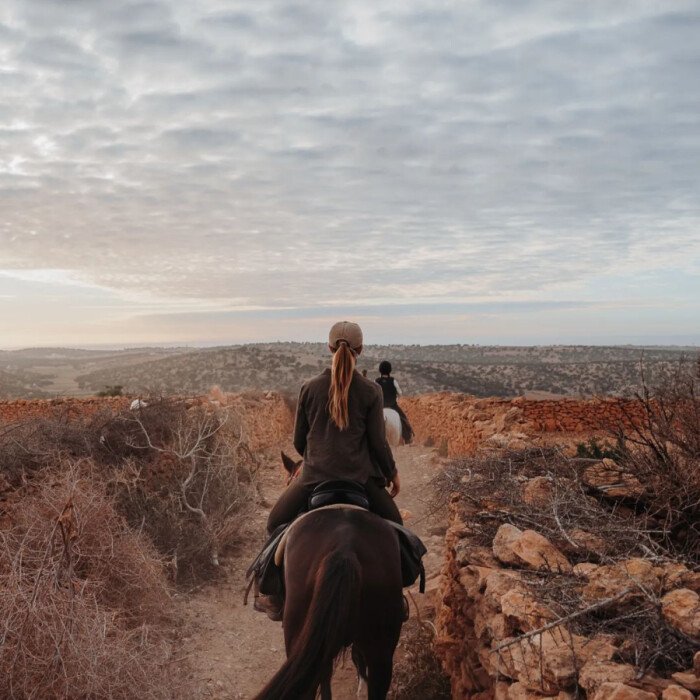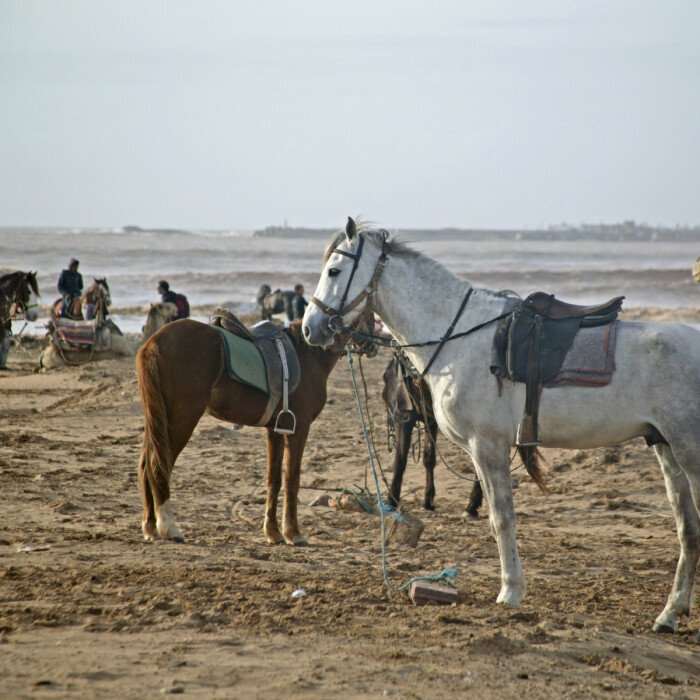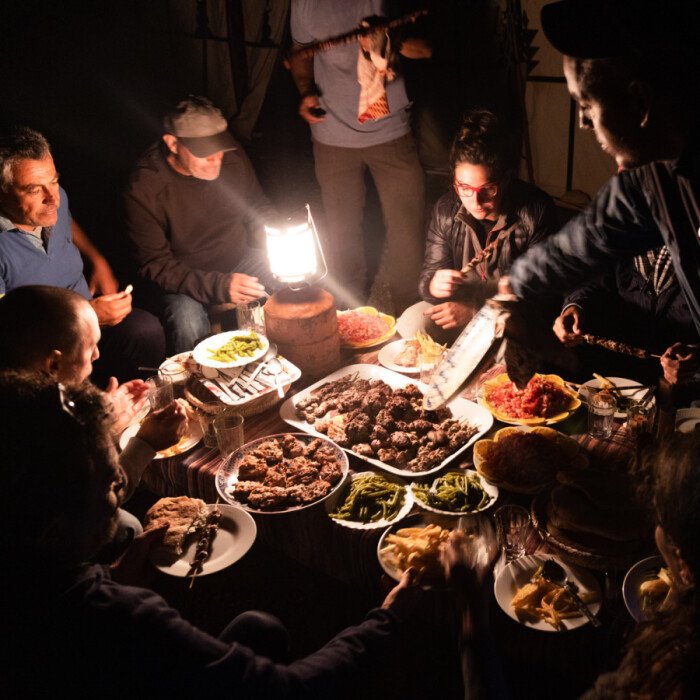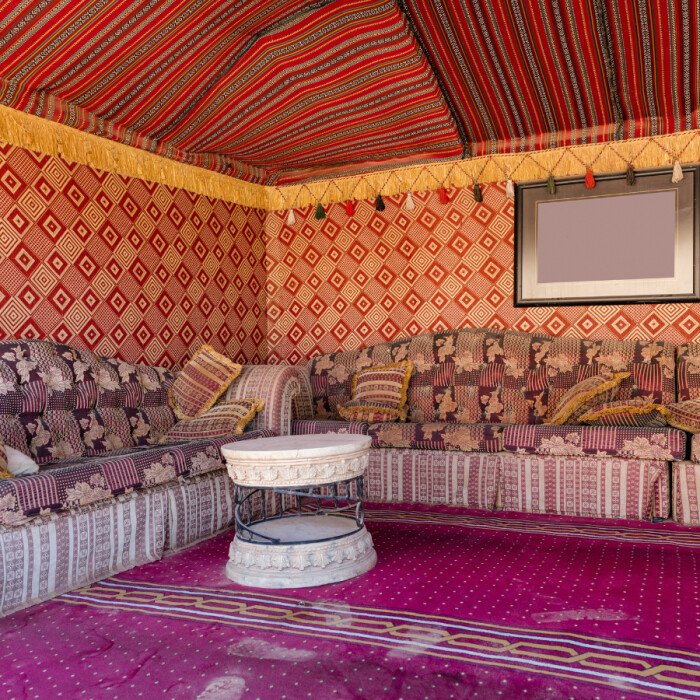Discover the behind-the-scenes of a horseback trek: planning, logistics, horses, meals and passion to make every experience unique and safe.

A horseback trek is much more than just an adventure immersed in nature. To make sure every experience is safe, well-organized, and unforgettable, there's a huge amount of work behind the scenes. From logistical planning to horse care, from bivouac setup to mobile cooking, every department plays a vital role. Today we take you behind the scenes to discover everything it takes to make a point-to-point trek work.
Before the trek: preparation
Organizing a point-to-point horseback trek takes weeks, sometimes months of preparation. Every detail must be carefully planned in advance to avoid surprises and ensure a pleasant and safe experience.
Choosing the route
The first step is defining the itinerary. Even if we know the routes well, we go over them again before each departure to check everything: passable trails, water sources for the horses, any changes due to weather or roadworks. In the desert, for example, a sandstorm or a flash flood can completely change the terrain. That's why we always do a reconnaissance beforehand and get ready to improvise if necessary.
Reception and back office work
At the same time, the back office work is intense. Requests come from multiple channels and each person has their own questions: travel details, help finding flights, vegetarian menu options. In addition to replying and assisting each guest until departure, we book accommodation for the first and last night, arrange transfers to and from Marrakech, and—crucially for point-to-point treks in Morocco—apply for bivouac permits in advance, including passports and GPS coordinates.
In addition to managing promotion channels, the office must:
handle information requests, respond to questions, manage bookings and assist clients with travel planning and extra services
book city accommodations for the first and last nights, making sure everything is ready for guests' arrival and departure
ensure all necessary permits are secured for setting up bivouacs along the route, handling the paperwork to guarantee a smooth trek
Transport logistics
When the trek doesn't start directly from the Ranch, a new challenge begins: getting everything to the starting point. Horses, gear, field kitchen, tents, hay—nothing can be left behind.
The truck becomes our mobile headquarters: it must always be tidy, stocked, serviced, and insured. Every space has a specific function. Equipment must be arranged for easy access, and the kitchen must be ready to operate as soon as we stop. Loading the truck is a bit like playing Tetris: if the pieces don’t fit, you have to start over.
Preparing the horses
Training and caring for the horses is a year-round task, adapted to the season and the type of activity. As a long trek approaches, we pay even more attention: we carefully match horses and riders not only by weight, height, and experience, but also by temperament and energy. It's not just a technical matter—it's a form of listening.
We are always highly attentive to the wellbeing of our animals. Each horse is checked both physically and mentally. If a horse has spent the past month doing quiet rides with beginners, it might need a few days of groundwork to regain focus and trust before tackling a more demanding trek with experienced riders. Every horse has its own rhythm and approach to work, and we try to respect that.
Cooking and meal organization
Eating well on vacation—and especially during a trek—makes a big difference. It's not just about energy: meals are moments to connect, get to know each other, and share laughs. The mobile kitchen follows the group, organized in well-planned crates. Every detail is designed to save time and space. On longer treks, we plan resupply points for essentials like fresh bread, fruits, and vegetables. And when someone has specific dietary needs, we do our best to accommodate them with care.
When night falls and the tents are already set up, someone often asks: "Where did this dinner come from, in the middle of nowhere?" The answer is: with planning, experience, and a few secret tricks from our magical team.
Bivouac equipment
When the group arrives at the bivouac, everything must already be ready. Tents pitched, blankets handed out, horses with their posts and fresh water available. Each night means a new setup, and each time we find a different solution. The equipment is packed in order before departure and organized in the truck for easy access: Berber tents, blankets, ropes, tack—everything has its place.
During the trek: operations on the move
Once the trek begins, the whole machine gets moving to ensure everything runs smoothly.
Group management
Each trek has its own rhythm, and each group creates its own dynamic along the way. As guides, our role is to keep everything together: observing how people are doing, how they relate to the horses, and stepping in when necessary to adjust things.
The days follow a well-defined rhythm: we set off early in the morning, take breaks in shady spots where the horses can rest and drink, stop for lunch—sometimes at a table, sometimes with a picnic from our saddlebags—and arrive at the bivouac in the late afternoon, where everything is already set up.
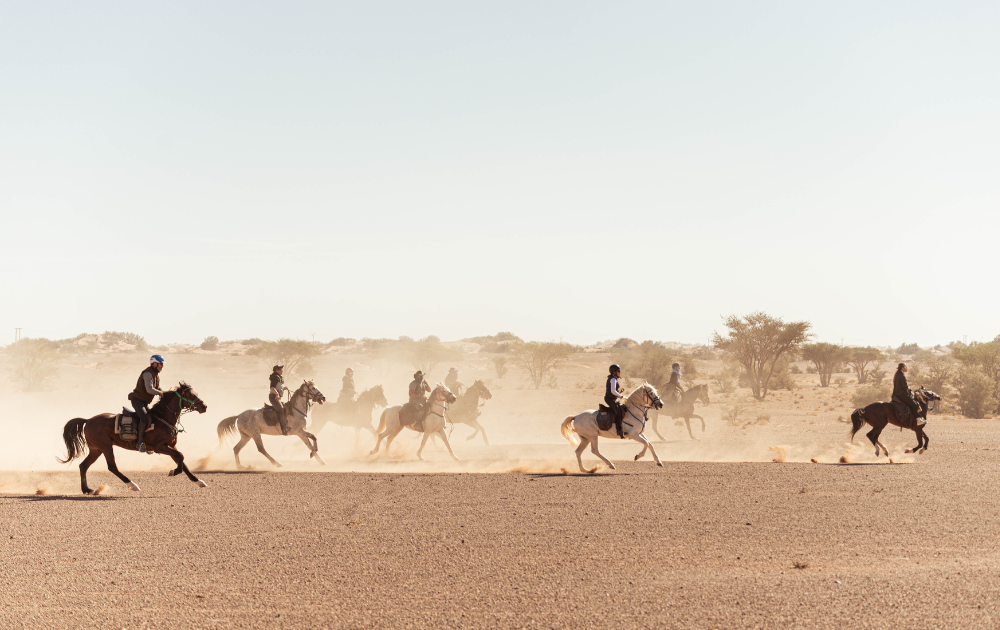
Safety and the unexpected
No matter how well we prepare, a point-to-point trek is always a moving experience, and unexpected events can happen: a horse gets injured, a sudden storm, a trail becomes impassable. That's why we always have a Plan B. We bring spare horses, stay in close contact with the logistics team, and adapt the route if needed. We've had to change plans to avoid flooded crossings or newly placed beehives right in the middle of a trail. But we’re ready: safety for riders and horses always comes first.
Work at the bivouac
When the group arrives, everything is already arranged. The tents are pitched, the toilet and shower area is set up, the horses have water, hay, and a place to rest. And the kitchen is already busy preparing dinner.
So, after hours of riding, we arrive to a warm welcome: a delicious meal, a ready bed, the sunset sky—and finally, the stars.
.png)
After the trek: return and reset
When the trek ends, each horse is checked individually to make sure there’s no fatigue or small injuries.
All the equipment is packed up, cleaned, and reorganized for the next adventure. Everything is reviewed: saddles, tents, kitchen gear, hay nets. This moment is almost as important as the beginning. It’s the end of one journey—and the beginning of another.
Feedback and planning for the future
Back at the Ranch, we take time to gather feedback from participants: what went well, what could be improved, any moments that stood out—for better or worse.
This feedback helps us grow and often confirms the value of our efforts. Sometimes it’s about small details, sometimes it leads to real changes. Every new trek begins here: with listening, with the desire to do better, and with the experience we’ve just shared.
Special attention for our guests
One of the most delicate parts of preparing for a trek is matching the right horse to each rider. For treks that start at the Ranch, we can make adjustments after meeting participants in person. But for point-to-point treks, where horses are selected in advance, this match is made remotely—based on information, intuition, and a lot of experience.
To make the welcome even more personal, each participant receives a folder with useful information about the program and their horse, written by someone who knows the horse well. It’s a way to start building a connection even before mounting up—and to show how much we care about the bond with your loyal travel companion.
A labor of love
Behind every point-to-point horseback trek, there’s careful organization and a team of people who work with passion to make each experience unique. From the guides to the cooks, from the logistics crew to the horse handlers—everyone contributes to the magic.
It’s a hands-on job, but it also comes from the heart. So next time you ride with us, you’ll know that every detail—while you gallop through the landscape—was thought out with love, precision, and care.
And now that you’ve seen behind the scenes... when will you come experience it for yourself?
